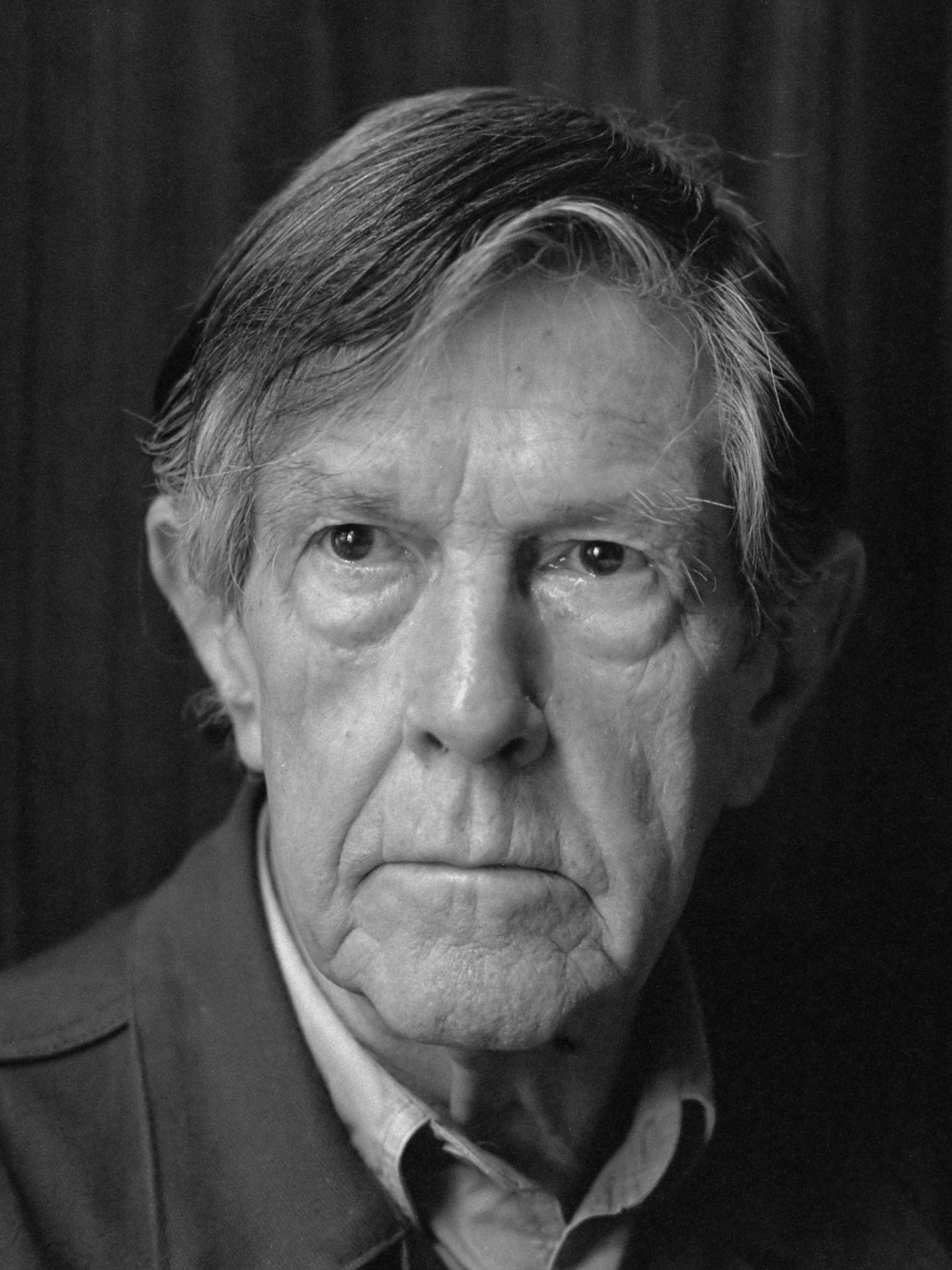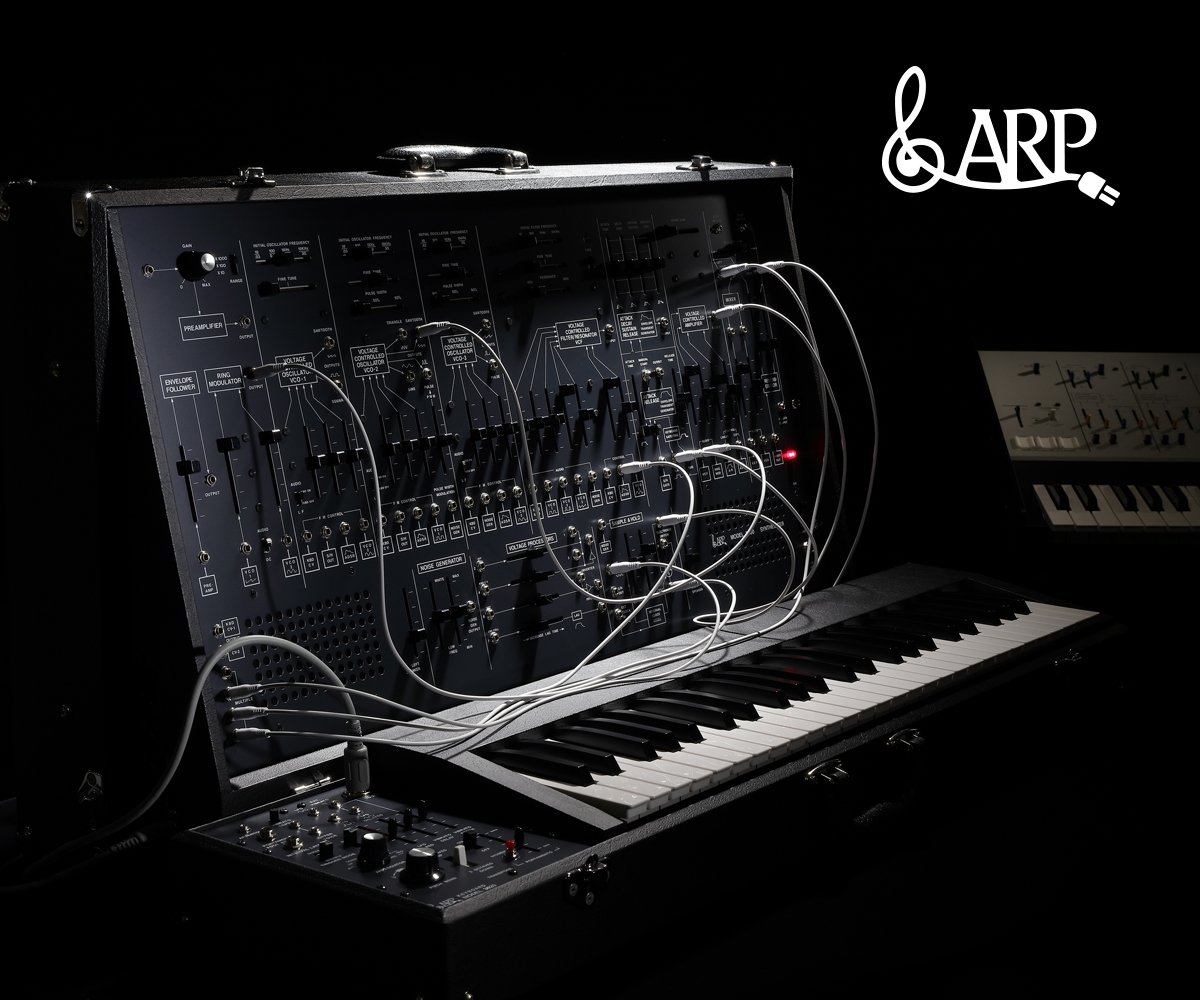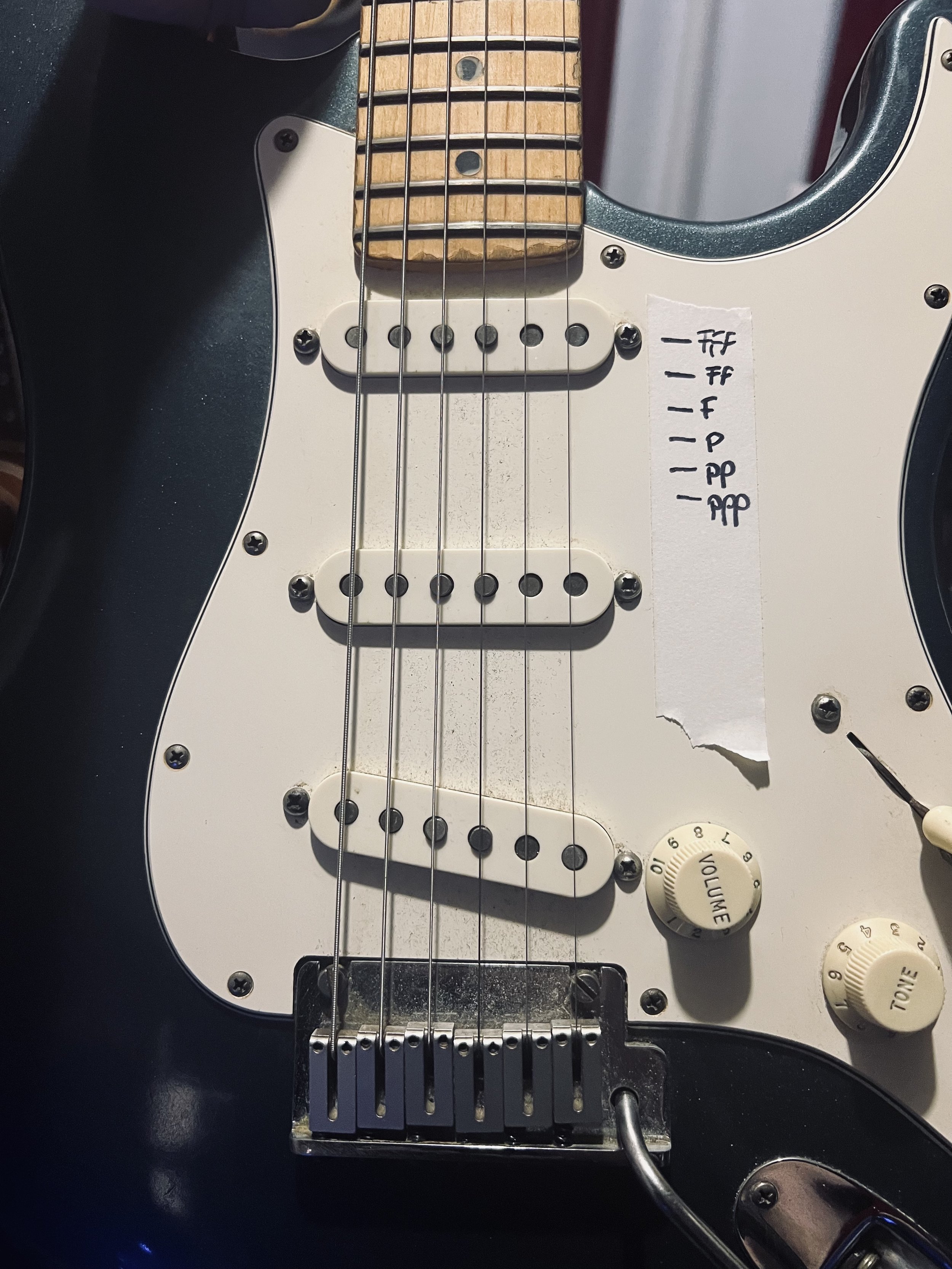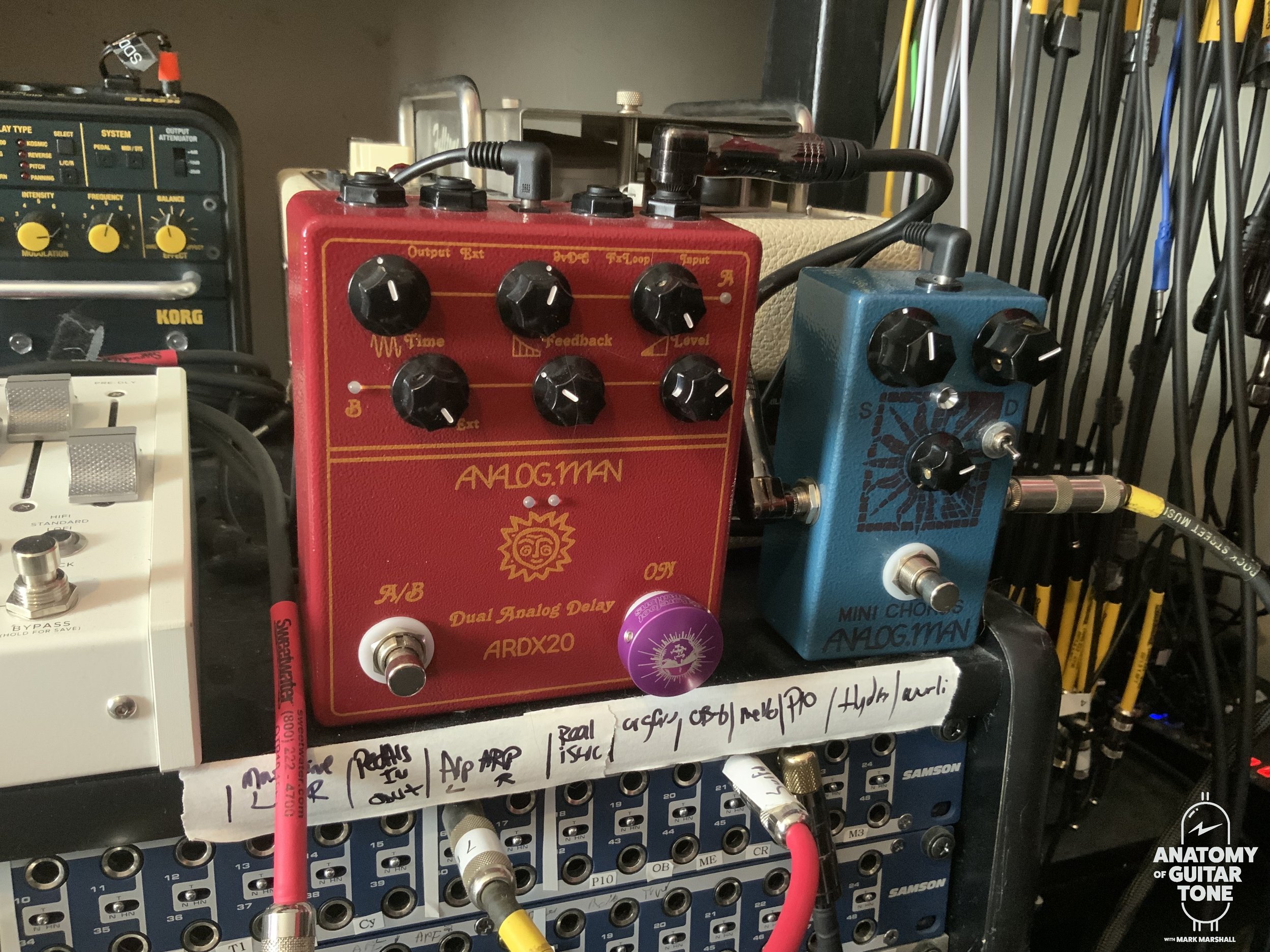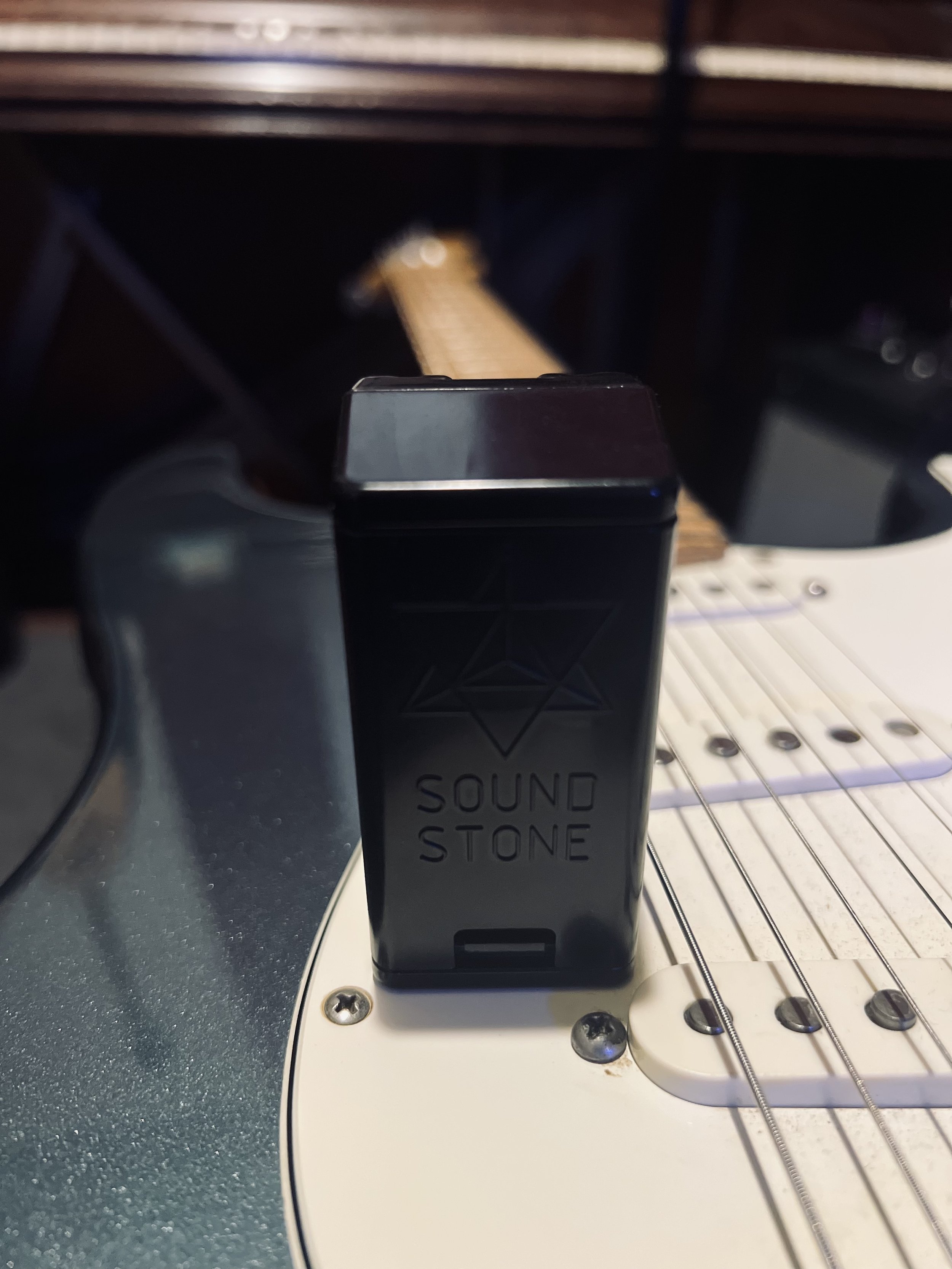Sound Stone Sustainer
The Ebow was first released on the market in 1976. The Ebow intended to create a string (violins, viola, cello) like sustain on the guitar.
Players skilled in using the Ebow could also emulate stocatto-like effects from a bow and feedback style sounds.
For years it seemed like the Ebow was the only product of its kind on the market. Interestingly, the idea hasn't been expanded over the years.
That is until now. The Sound Stone was created as a more cost-effective version of the Ebow.
The Ebow itself costs $100, which can be a little high for some players looking to experiment with bow-like effects. Also, because they tend to be small handheld devices, they can easily be lost on gigs. The Sound Stone is less of a heartbreak if you have to replace it. The material is also more robust as it's made from the same material as football helmets.
There have been other sustainer-like effects, such as the Fernandes sustainer, which fits inside a neck pickup on an electric guitar. But then, the sustain device is paired with a specific guitar.
The beauty of the Sound Stone is being able to use it with multiple guitars. It works with all pickup combinations with varying sensitivity due to the sensitivity and output of various pickups.
I use the Sound Stone with every pickup style, but my favorite has to be single coils as they are just the right level of output for my playing using the Sound Stone. But that doesn't mean single coils will be your preference.
A Familair Sound
John Cage
You have heard the Ebow on many well-known tracks, such as "Don't Fear the Reaper," if you listen past the cowbell. The Edge from U2, John Mcgeoch from Siouxsie and the Banshees, Radiohead, REM, and Daniel Ash to name just a few.
Also listen to the Church "Under the Milkyway" for Ebow textures. The Ebow sound has even been used in the music of John Cage as well as experimental guitarists.
Monophonic
Because of the device's design, both the Ebow and the Sound Stone are monophonic tools. Meaning you can only play one note at a time. It's like turning the guitar into a mono synth, such as an Arp 2600.
Applications
The Sound Stone changes timbre and volume depending on how close you place it to a pickup. It's good to spend some time getting to know you Sound Stone placing in relationship to dynamics.
One thing to remember about dynamics with instruments is that the tone or timbre changes depending on the velocity you play an instrument. Using a volume pedal after the guitar yields a different sound than moving the Sound Stone further away from the pickup.
“Using a volume pedal after the guitar yields a different sound than moving the Sound Stone further away from the pickup.”
One trick to get used to positioning is to use masking tape to mark the distances of your dynamics, such as triple pianissimo to triple forte. Using tape will help you to get a better feel of placement and dynamics.
If I'm scoring a part for Sound Stone, I will take the time to write in the dynamics I want in the performance. I also write in the type of sound I'm looking for.
Tonality
Depending on the pickup you choose with the Sound Stone, you can yield quite different colors. A neck pickup with the tone rolled back can sound flute-ish. Roll the tone knob forward and get cello or violin-like tones.
It's worth taking time to write notes on a score or consider what color you're using Sound Stone to imply.
Partners
The Sound Stone makes great friends with reverb and delay. You can create lovely drone-like effects with the Sound Stone. The fact that it's string-like but doesn't exactly sound like strings can be fantastic for sound design. It can sound familiar but slightly unfamiliar at the same time.
This past Winter, I worked on the Jordan Peele-backed horror podcast "Quiet Part Loud". That was a particularly fun project to be part of. There was a lot of allowance for creativity. I was free to push the boundaries of tonality.
I used the Sound Stone to create chilling drones, weird screeches, and percussive staccato effects. I sometimes transfer the recording to a circuit bent tape recorder to mess with vari-speed.
I would also use experimental prepared guitar techniques with alligator clips, metal, and the Sound Stone to create unusual, unsettling tones.
The Sound Stone just isn't great for horror and sci-fi, though. You can conjure up quite dreamy tones. I like to run my Sound Stone through a Chase Bliss CXM-1978 for dream-like modulated reverb scapes.
Delay
I like to use analog delay or tape delay with the Sound Stone as I'm not usually looking for a sharp repeat on the tone. The mellower repeats of an analog delay or tape delay allow the notes to melt into each other better. But remember, there are no rules. You may not want the notes to melt into each other.
Harmonic Overtones
The only functional difference between the Sound Stone and a modern Ebow is the Ebow has a switch on it to engage an upper harmonics mode. It's almost like jumping the pitches up an octave, except it's not always that exact. Depending on what note you're playing results in what upper harmonics you get.
Sound Stone focused on the original Ebow sound, which had no harmonic switch. If the upper harmonics are essential to you, you have to shell out the extra $50 for an Ebow.
Just because the Sound Stone doesn't have a high harmonics switch doesn't mean you can't get high harmonics out of it. With careful Sound Stone hand technique, you can get plenty of harmonics from your notes.
Loopers
Combining loopers and the sound Stone can be a lot of fun too. When creating drones, I often love to use a looper to add several layers of drones on top of each other.
Krzysztof Penderecki
I'm a big fan of the music of composer Krzysztof Penderecki. He wrote varied music in his career. I'm a fan of much of it, particularly his atonal works. You have likely heard some of his "Threnody for the Victims of Hiroshima" composition. The composition appears in "The Shining", "The Exorcist," and "Black Mirror," just to name a few.
One notable part of the composition that many composers have adapted is that strings use glissando techniques to raise and lower their pitch but not synced. There is only a suggestion of what direction to move and timing directions, like 30 seconds.
The violin section of an orchestra alone is 30 players. With just the 30 violins slowly moving to a higher note, not all in sync, you get quite an eerie sound.
You can use a looper and the Sound Stone to create these atonal effects to note the tension in the music.
Filter
A fun combination to pair with the Sound Stone is the Death by Audio Evil Filter. The Evil Filter is both a fantastic fuzz and a filter pedal. I connect an expression pedal to the Evil Filter and set it up as a low pass filter to operate in the way a filter would on an analog synth.
When I roll back the pedal, it cuts off all the high frequencies, which is a wonderful way to inject tonal dynamics into Sound Stone parts. It sounds more round than using a volume pedal which turns down the volume and doesn't roll off the high frequencies.
Using the filter also acts differently than using a wah-wah pedal, which has a unique flavor and should be experimented with.
The bonus is pairing the Evil Fuzz with the Sound Stone, which sounds menacing.
In the examples at the end of this article, I used a Fender Stratocaster with FSC ‘59 pickups, a Headstrong Lil King Reverb, an Ampete 88s Amp Switcher, API preamps, and a Purple Audio MC77 compressor running into Luna.
Volume
The volume output from the Sound Stone can be pretty loud when you're right on top of the pickup. The volume is considerably louder than what is produced by the guitar pick. In live situations, I have used a pedal to step down my volume or have a volume pedal at the end of my chain to control the overall volume going to the amp.
The Sound Stone is an important tool to have in your guitar toolbox. Sometimes in a session, some special sauce is needed to fill out a track, much like what a synth pad might do. The Sound Stone works splendidly in these situations.
EX1: Two Part Counterpoint with Sound Stone and Chase Bliss CXM 1978
EX2: Flue like sound with the Sound Stone and Chase Bliss CXM 1978.
EX3: Sound Stone with looper (for tension drone) and Chase Bliss CXM 1978.
EX4: Warning, things are gonna get weird starting now. We’re heading into the world of experimental music. In this example I use the Death By Audio Evil Filter as a low pass filter along with the Sound Stone to create tense sounds. I’m using an expression pedal with the Evil Filter to control the low pass filter.
EX5: Sound Stone and Evil Filter with the fuzz engaged and Chase Bliss CXM 1978.
EX6: Whale like sounds using the Sound Stone and the Evil Filter with low pass expression and fuzz engaged, Chase Bliss CXM 1978 and Analog Man ARDX20.
EX7: Sound Stone with a glass slide into the Evil Filter with expression pedal and fuzz engaged, Chase Bliss CXM 1978 and Analog Man ARDX20.
EX8: Sound Stone into the Evil Filter set to a high pass filter and expression pedal. I’m using the high pass filter to cut off the bass after the initial attack of the note for the illusion of a staccato note, but with high end Sound Stone sustain in the background.


